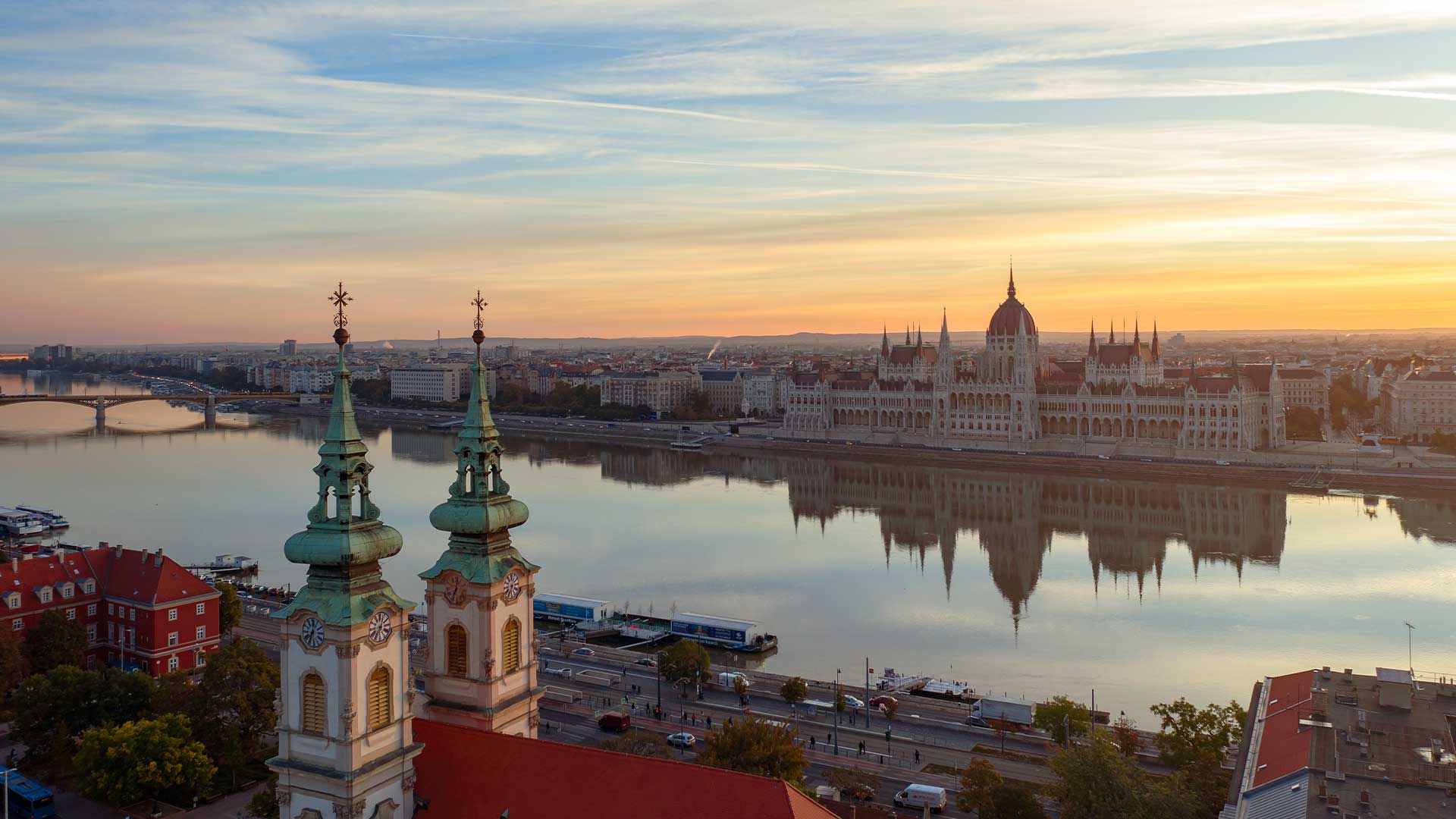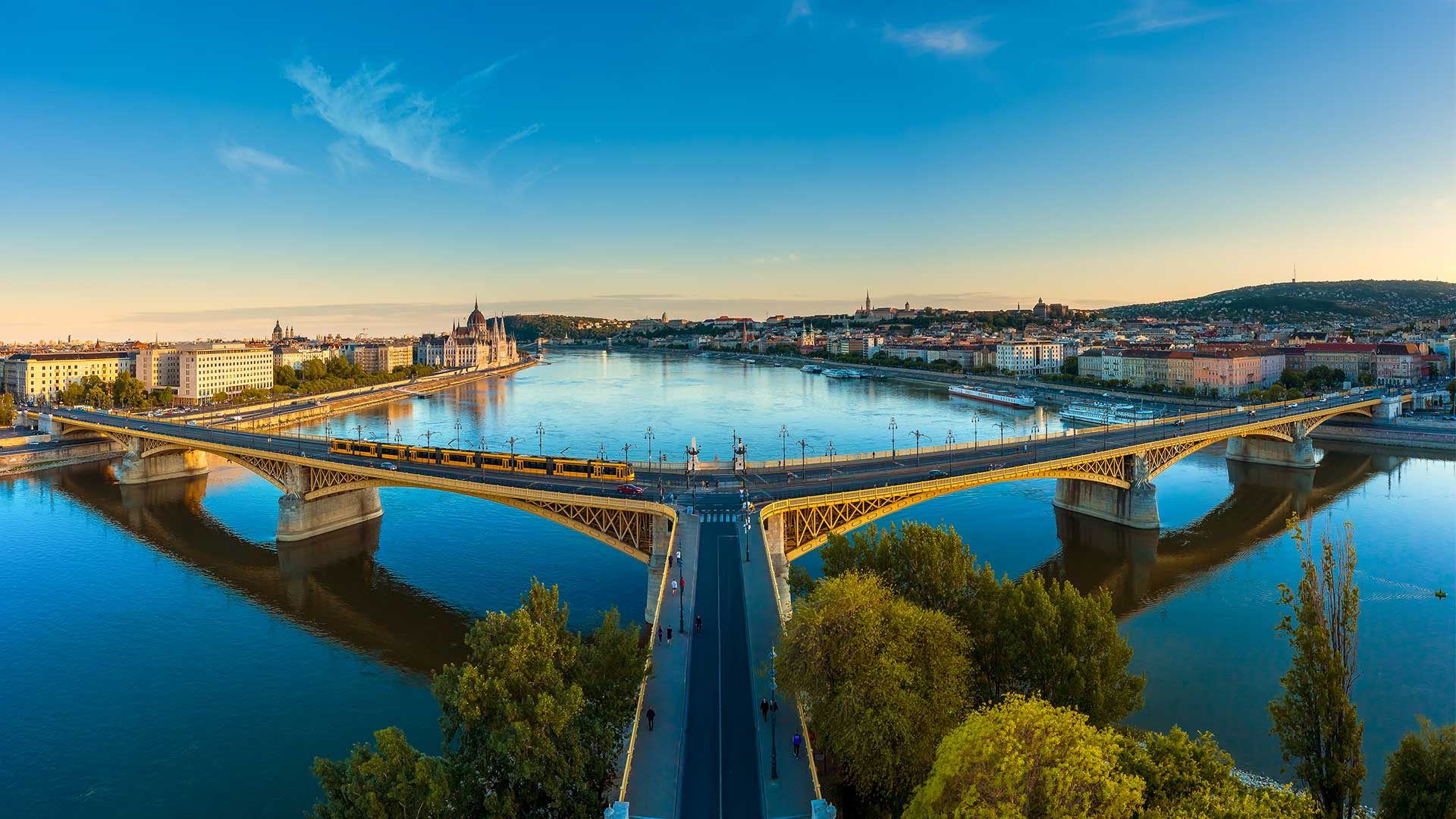
Exploring Budapest’s rich architectural heritage
Budapest, Hungary’s capital city, is one of the most beautiful in Europe. Its buildings and architecture reflect the country’s rich and varied history and that of the peoples who have lived – and ruled – there. Baroque buildings from the time of Queen Maria Theresa are the dominant force, but classicism, romanticism, and historicism are woven into the story of Hungary.
Legacies of a royal past
The city was once three, Buda, Óbuda and Pest divided by the magnificent Danube. The enduring image of Budapest is one of a fairytale skyline; dramatic bridges crossing the Danube as it snakesbetween the Hungarian parliament building and Buda Castle. And it’s this the castle, the seat of kings and emperors, that should be first on any visitor’s list. Sections of the palace date back to the 14th century, and the whole building has a magical appearance to it. The hill on which the whole castle district sits on a hill which is strangely hollow, and is full of a warren of caves, tunnels, and cellars. Some date back to the medieval period, and each has a different secret, from passages for spies to hidden refuges during the two world wars.

The mother of parliament buildings
On the other side of the river takes you to the Hungarian Parliament, but take in the view of Imre Steindl’s gothic revival masterpiece is from the opposite bank before you cross.The building is notable for many reasons, such as Europe’s largest hand-knotted carpet to the Dome Hall; home of the Hungarian crown and regalia. An astonishing 40 kilos of 24-carat pure gold foil was used in the interior decoration, and it has 365 towers, one for every day of the year.

From the secular to the divine
Throughout human history, some of the most impressive buildings have built by the world’s major religions, and Budapest is no different. St. Stephen’s Basilica is the largest church in Budapest, standing 96 meters tall. It took 54 years to build, and is surrounded by a pretty square. The views are fantastic, whether you’re staring from the top of the dome at the city, or standing outside and looking up at the church itself.

Architecture for timeless luxury
Budapest boasts an impressive neo-Renaissance opera house. Designed by prolific Hungarian architect Miklós Ybl, it opened in 1884. Inside and out, it has an unmistakable sense of both grandeur and drama and is unsurprisingly one of the most visited buildings in Hungary.
If there’s a building in Budapest that evokes the spirit of the Belle Epoque, it’s the Párisi Passage Café & Brasserie. It sits in what was once Budapest’s first modern department store, and is now part of the Párisi Udvar Hotel. Its galleried windows, gilt paneling and magnificent skylights immediately take you back to the beginning of the previous century.

World-leading public buildings
Budapest also has an enviable selection of impressive contemporary architecture, chief of which must surely be the building housing the Museum of Ethnography. It’s brand new, opening in May of this year, and has already won awards, including Best Public Architecture at the International Property Awards. The building was designed to connect the city and with the surrounding parkland, and the gently sloping lines and extraordinary rooftop garden – from which you can take in the view. Equally impressive is the façade decoration of almost 500,000 pixels, creating a contemporary adaptation of Hungarian and international ethnographic motifs.
A fitting home for a musical heritage
Equally impressive is Budapest’s House of Music (HoM), where Hungary’s internationally renowned musical heritage can be explored. Sitting in the City Park, close to the famed Széchenyi Baths, this strikingly beautiful design is in complete harmony with the mature trees that surround it. It is widely considered to be one of Japanese architect Sou Fujimoto’s masterpieces.

Monuments to a movement
Completing a trilogy of ultra-contemporary buildings that symbolize Budapest’s continual architectural prominence is the new MOME campus, home to the Budapest University of Art.
The Bauhaus Foundation celebrated its centenary last year, and Hungarian artists – László Moholy-Nagy and Marcel Breuer especially – played a key role in the school from the very beginning. This is especially true in the difficult years after WWII. The university has strong links to the movement, and its five new buildings are the perfect examples of the architectural style and are situated in a wider area of outstanding interwar Bauhaus architecture, making the whole area a wonderful place for fans of the movement to visit.
With a unique architectural heritage shaped by the ebbs and flows of historical change, and a forward-thinking approach to future design, Budapest provides a visual feast for travelers.

